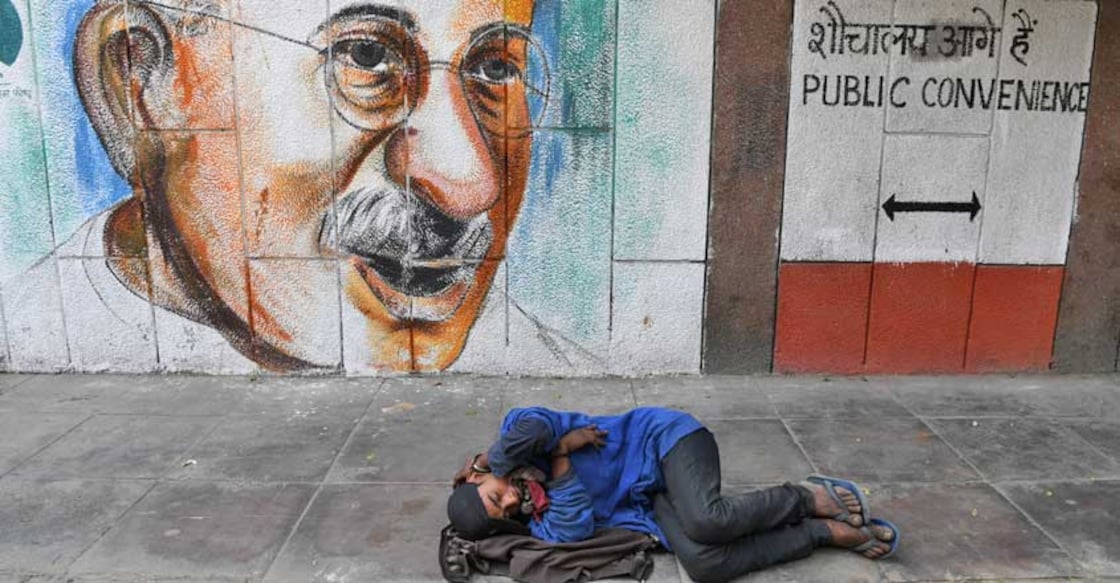Global Hunger Index: India ranks below Pakistan, Nepal, China

Mail This Article
Washington: India was ranked 102 in the 2019 Global Hunger Index (GHI), much below its neighbours Pakistan (94), Bangladesh (88), Sri Lanka (66), Nepal (73) and China (25). The GHI, which was released on Tuesday, noted that "India suffers from a level of hunger that is serious".
The country has gained a position compared to previous year (103). But it is hardly a reason for consolation, as, in 2017, India was placed 100th.
Jointly published by Concern Worldwide and Welthungerhilfe, the GHI ranks countries based on four key indicators - undernourishment, child mortality, child wasting and child stunting. Child wasting refers to share of children under the age of five who have low weight for their height, reflecting acute undernutrition. "Wasting is most prevalent in Yemen, Djibouti, and India," according to the GHI.
Because of its large population, India's GHI indicator values have an outsized impact on the indicator values for the region, the report noted. "India's child wasting rate is extremely high at 20.8 per cent - the highest wasting rate of any country in this report for which data or estimates were available."
According to the report, India's child stunting rate, 37.9 per cent, is also categorised as very high in terms of its public health significance. "In India, just 9.6 per cent of all children between 6 and 23 months of age are fed a minimum acceptable diet. As of 2015–2016, 90 per cent of Indian households used an improved drinking water source while 39 per cent of households had no sanitation facilities (IIPS and ICF 2017)," said the report.
The GHI acknowledged Prime Minister Narendra Modi's 'Clean India' campaign and his attempts to end open defecation, but noted that “even with new latrine construction, however, open defecation is still practiced". It pointed out that the situation jeopardises the health of people, especially the children, as "their ability to absorb nutrients is compromised".
It is "designed to comprehensively measure and track hunger at global, regional, and national levels" with the intention of creating awareness and understanding about the "struggle against hunger, provide a way to compare levels of hunger between countries and regions, and call attention to those areas of the world where hunger levels are highest and where the need for additional efforts to eliminate hunger is greatest," according to the GHI website.
The result, which comes days ahead of the assembly elections in Maharashtra and Haryana, might cause some embarrassment for the ruling BJP.
Welthungerhilfe is a not-for-profit group and Concern Worldwide works towards improving lives of poor people.
'India halved its poverty rate since 1990s'
Meanwhile, the World Bank on Tuesday said India has halved its poverty rate since the 1990s and achieved a seven plus growth rate over the last 15 years.
India is both critical to the success of global development efforts, including eliminating extreme poverty, and as an influential leader for global goods such as addressing climate change, the bank said ahead of the annual meeting between it and the International Monetary Fund.
The country has achieved annual growth exceeding seven per cent over the last 15 years, halved its poverty rate since the 1990s, and enjoyed strong improvements in most human development outcomes, the World Bank said.
Noting that India's growth is expected to continue and elimination of extreme poverty in the decade is within reach, it said at the same time, the country's development trajectory nonetheless faces considerable challenges.
For this, the World Bank said, India will need to achieve greater resource efficiency as it sustains growth, given its resource endowments and large population.
Land will need to be used more productively in urban areas by the spatial transformation of cities achieving agglomeration economies and in rural areas by increased agricultural productivity, it said.
India's water management will need to provide for shifting water allocation to higher-value uses and policies to increase the value of water use within sectors. In addition, 230 million people are not properly connected to the electricity grid while generation will need to be less carbon intensive, the World Bank pointed out.
More generally, India's rapidly growing economy needs investment in infrastructure, an estimated 8.8 percent of GDP or $343 billion a year until 2030, it said.
Second, sustained growth will also need to accelerate inclusion, especially to create more and better jobs. While an estimated 13 million people enter the working age population each year, only three million new jobs are being generated on an annual basis, the financial institution said.
The World Bank said a particular challenge lies in India's declining female labour force participation, which at 27 percent is among the lowest in the world despite overcoming gender gaps in education.
Finally, India's public sector institutions will need to be modernised to deliver services and regulations that match the aspirations of a middle income country; this will entail improving accountability and effectiveness, improving the ability of the state to interface with the private sector, and strengthening the compact among tiers of government to improve service delivery, the bank said.
(With inputs from The Week and PTI)

